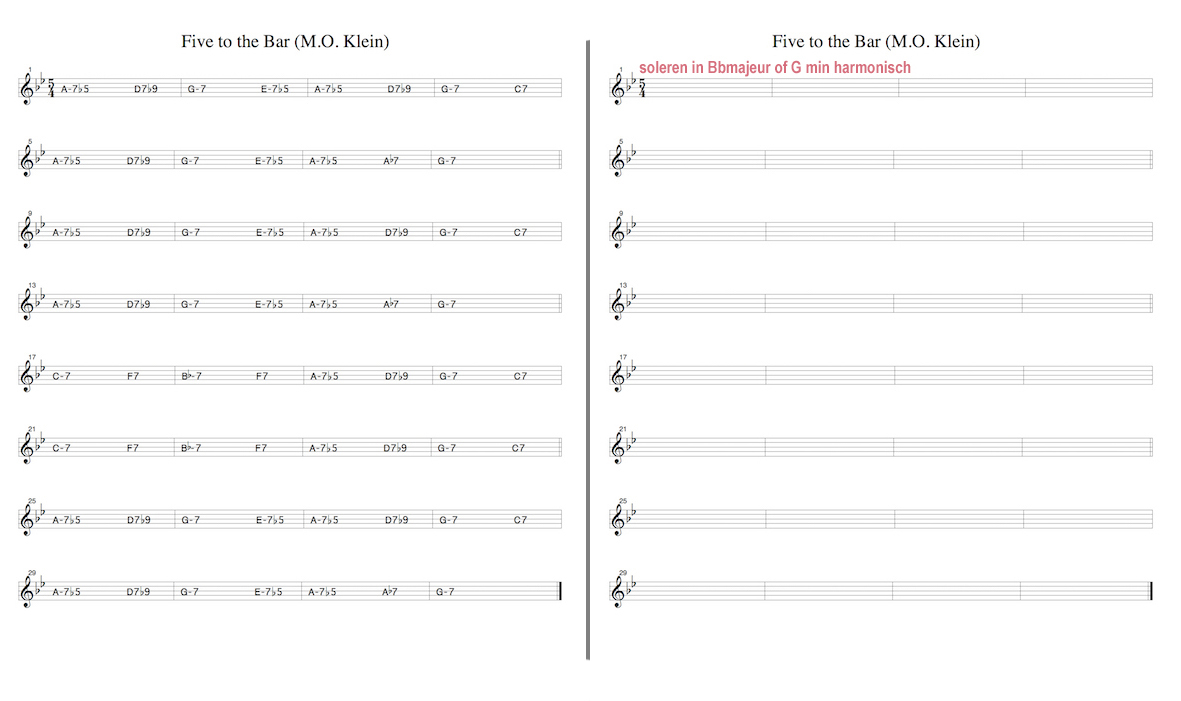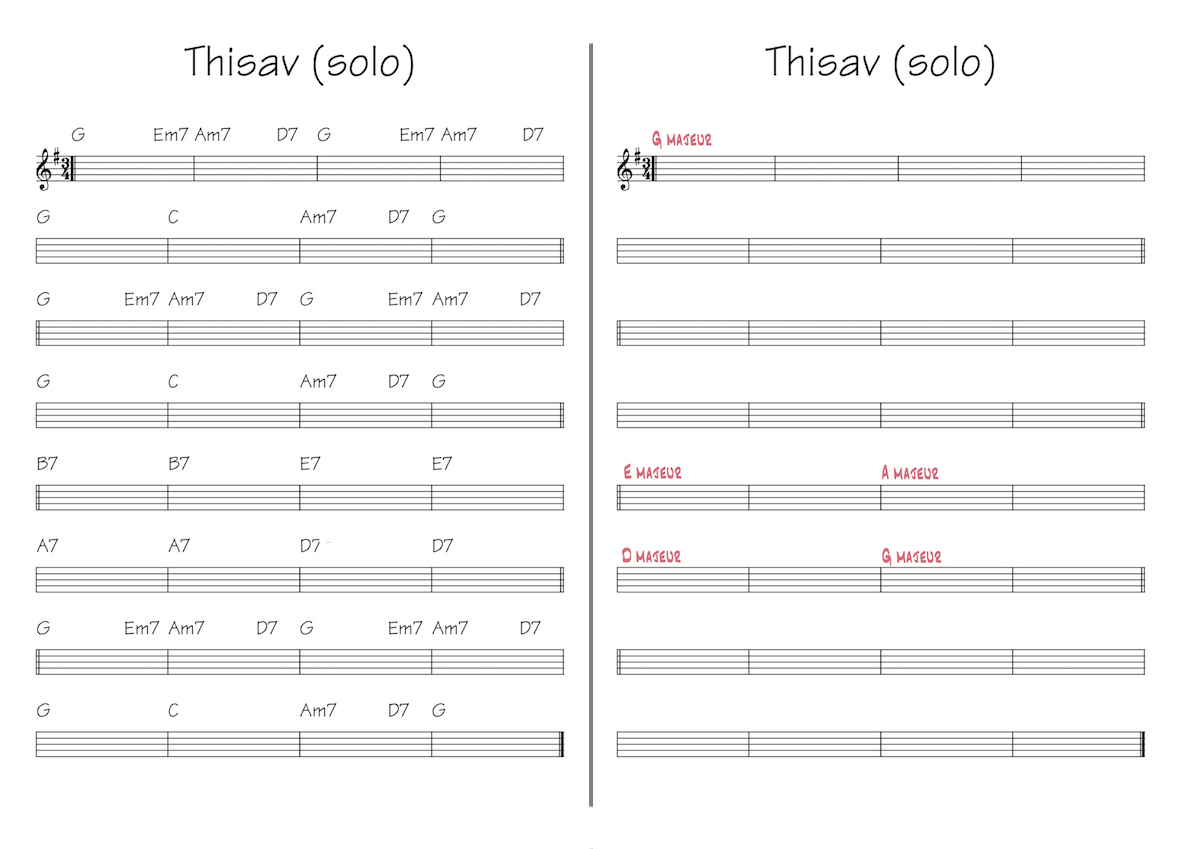more on momo jazzreduction
the name
The analysis primarily revolves around the choice of 'does it modulate or doesn't it modulate,' hence 'momo'.
Reducing a complex chord progression to simply indicating in which key you can improvise and where it might change, led to the title 'reduction'.
Thus, the name 'momo jazz reduction' was born.
course content
A short course in chord theory that enables you to quickly analyze chord progressions. You'll learn to break down the progressions into segments in the same key and how to recognize modulations (key changes). This allows you to improvise in a simple and natural way over seemingly complex progressions.
The entire theory consists of four pages, of which only a small part needs to be committed to memory. What's essential is gaining experience in the analysis method and becoming familiar with the most common deviations from the theory. That's why the course spans five lesson hours.
The first hour is used to go through the theory and analyze a few standard progressions. For the following lessons, you'll receive several songs to analyze on your own, which we will then review together.
After completing the course, you are, of course, welcome to continue with follow-up lessons if you need assistance in applying the method to your improvisations, expanding it with embellishments and chord-specific 'extra' notes.
background
There are different ways to approach a chord progression:
- Vertical soloing:
This approach centers around the chords, playing "per chord". The player searches for beautiful patterns and lines with each chord and finds suitable connections to move to the next chord. For this type of improvisation, you need a solid understanding of chords and an extensive toolbox of patterns.
- Horizontal soloing:
In this approach, the soloist pays more attention to the key and the progression of a song, using the chords to determine which scales can be used for improvisation throughout the piece. This makes it easier to play melodic (horizontal) lines. My theory course is based on this approach.
why make things difficult
Horizontal improvisation is often considered old-fashioned and less jazzy, while putting heavy emphasis on following and showcasing all chord changes. This, in my view, unnecessarily complicates the life of the novice improviser.
Most music is not composed starting from a chord progression but rather from a melody or lyrics, with chords added later.
Instead of considering chords as the holy grail, I begin by reducing a progression to a series of 'useful notes' (major scale, minor scale, blues scale). This makes it easier to structure your improvisation and explore a song at a comfortable pace. Subsequently, you can expand with embellishments and specific (deviating) notes from the chords.
Examples before and after analysis. On the left, you see the complete chord progression; on the right, you have everything you need to improvise after the analysis. The red text indicates which scale you can use and, if necessary, where you should switch scales (example 2). It's simpler to follow and easier to memorize. Knowledge of the most common scales is, of course, a requirement.


back

chord sequences
translated to blocks...

(@jazzmo)





